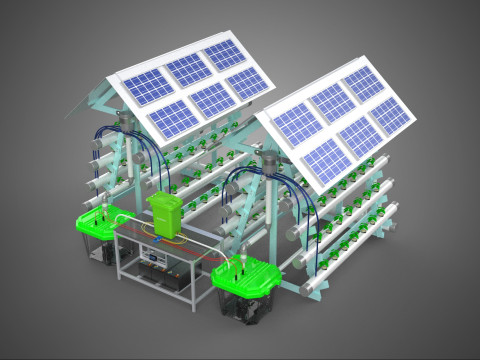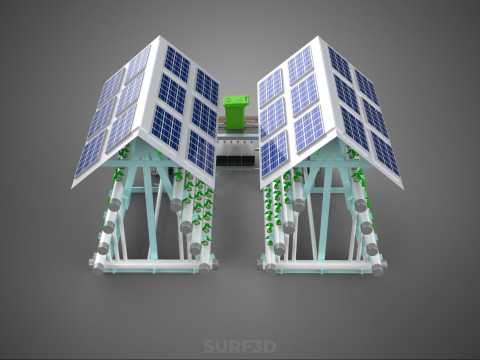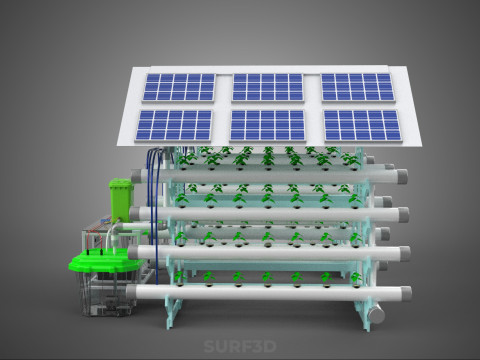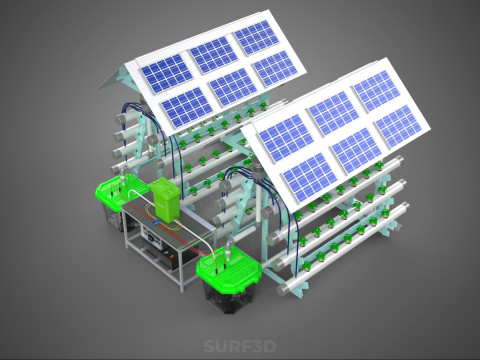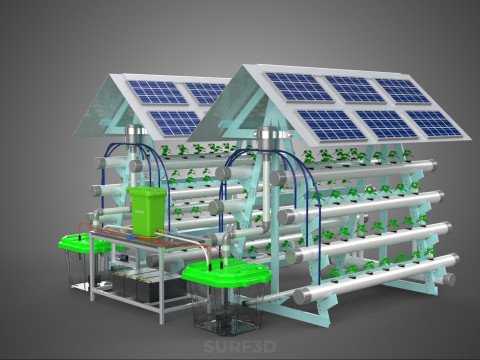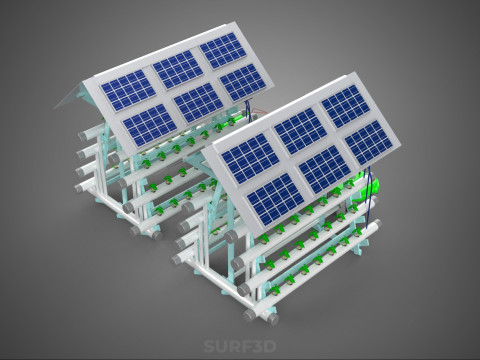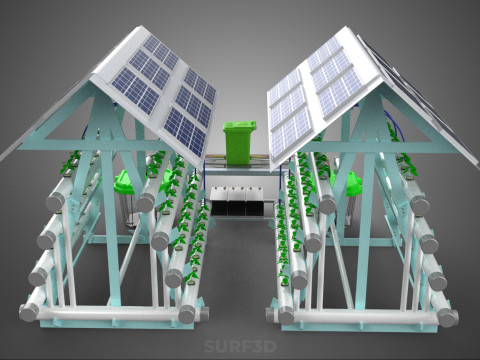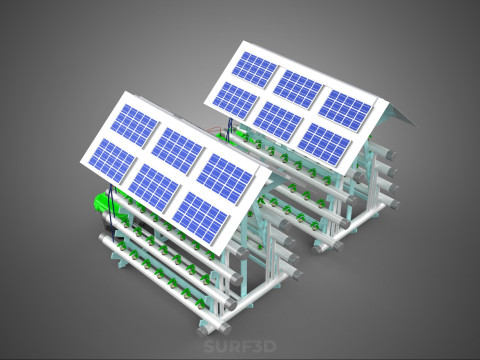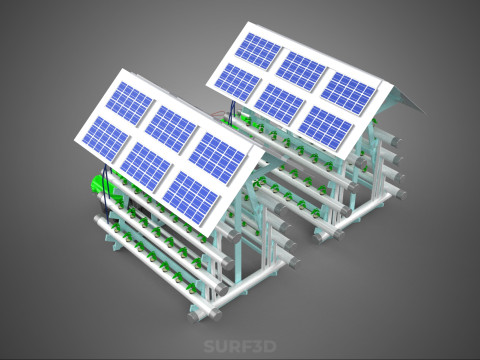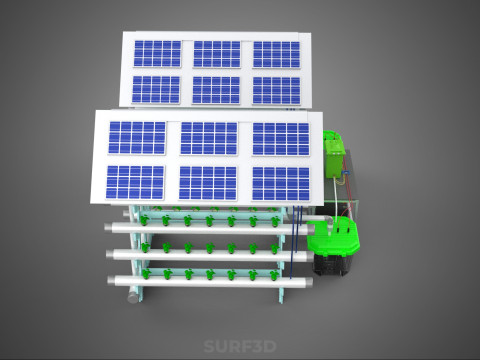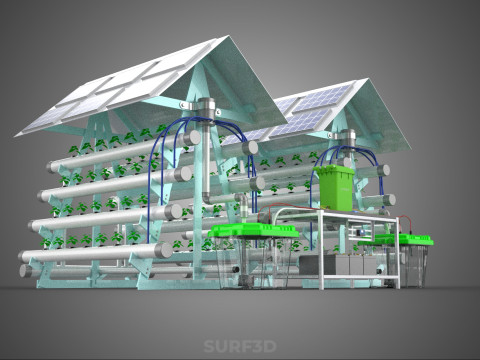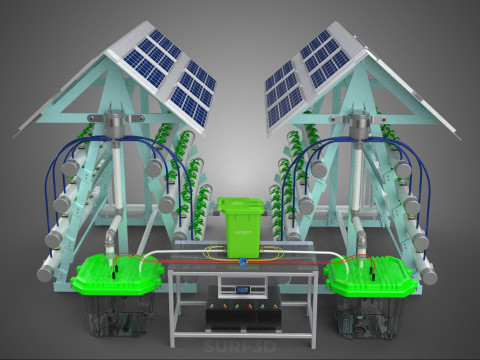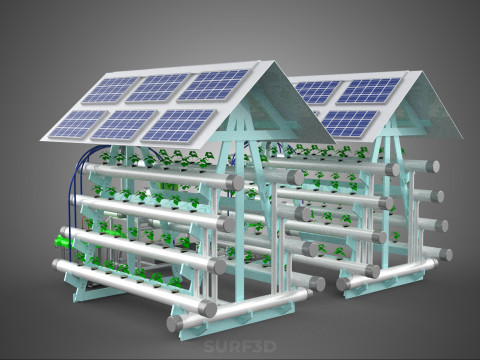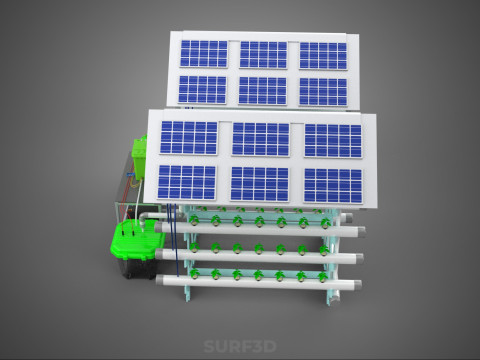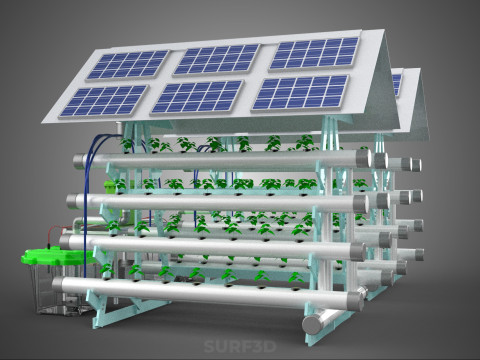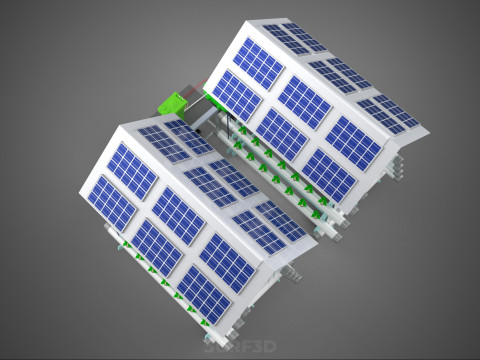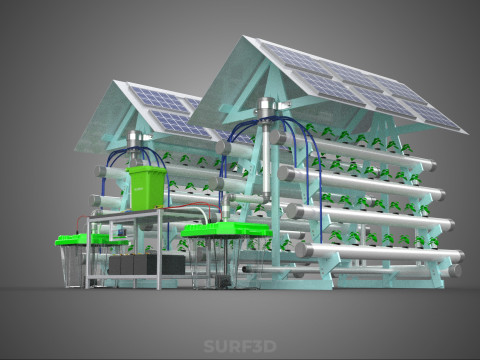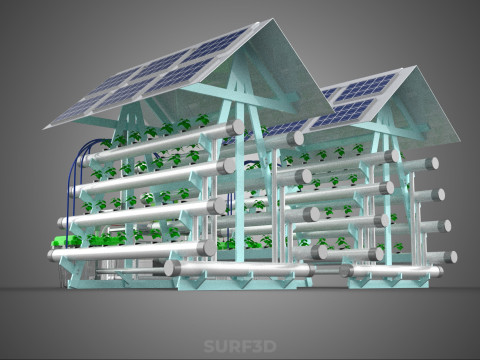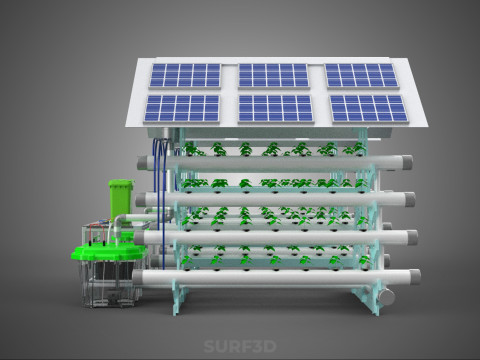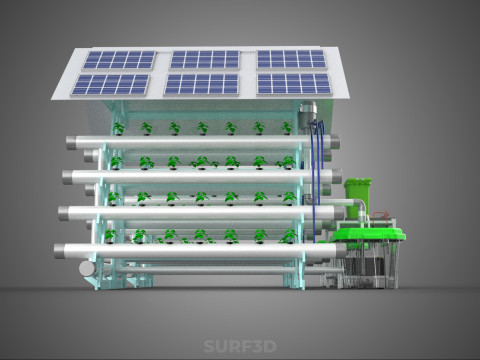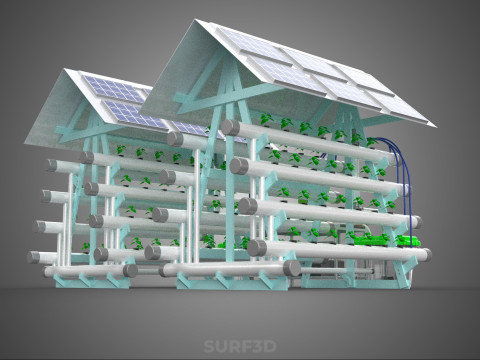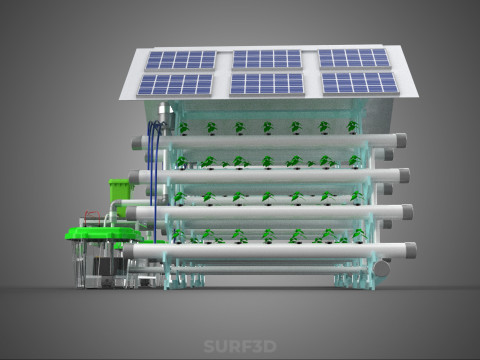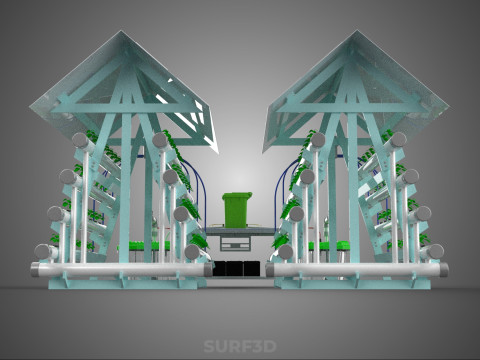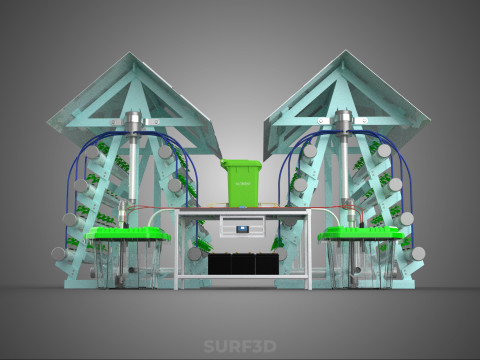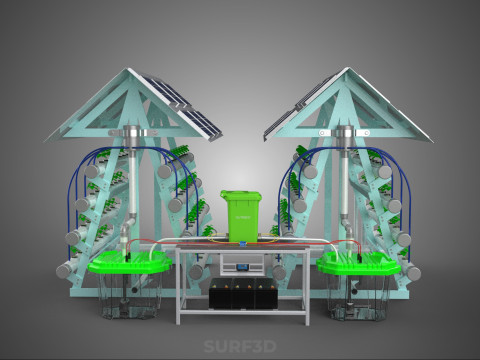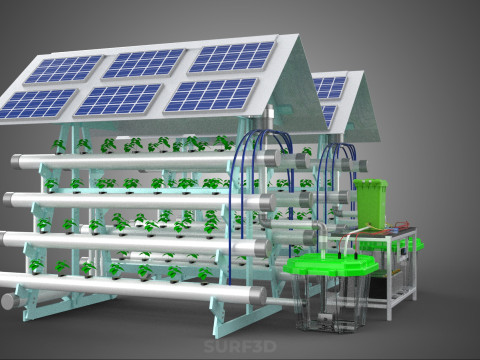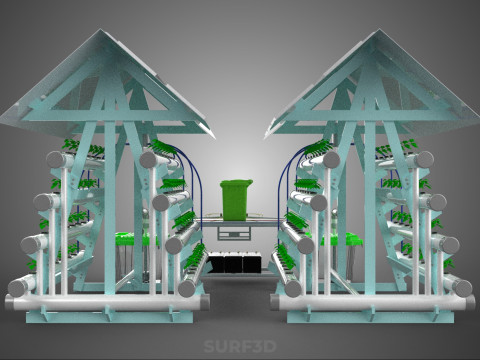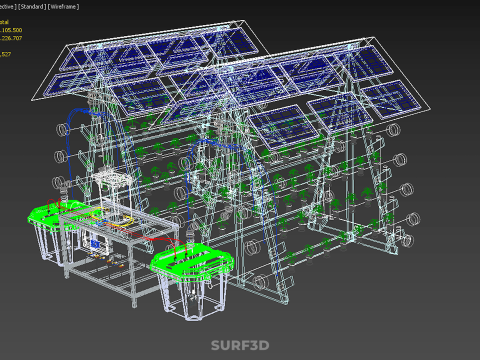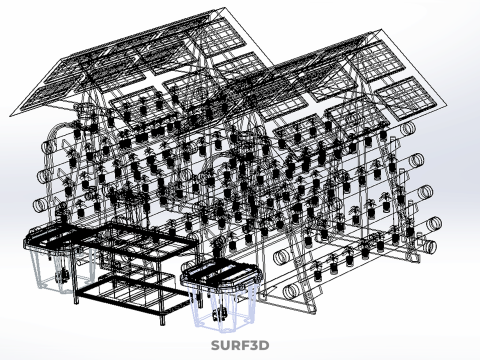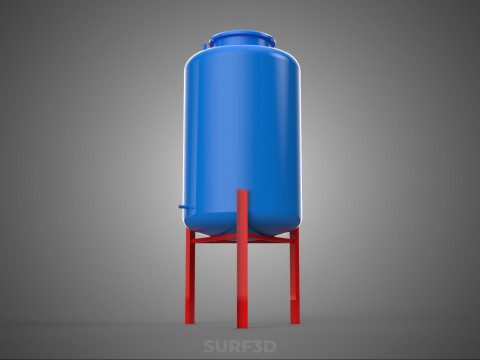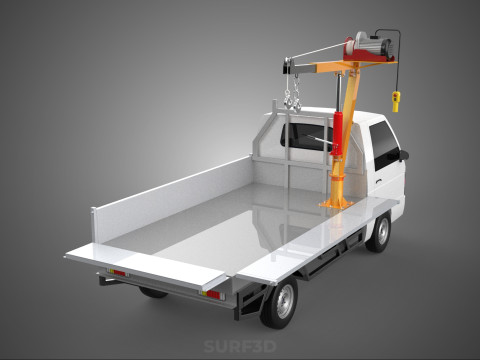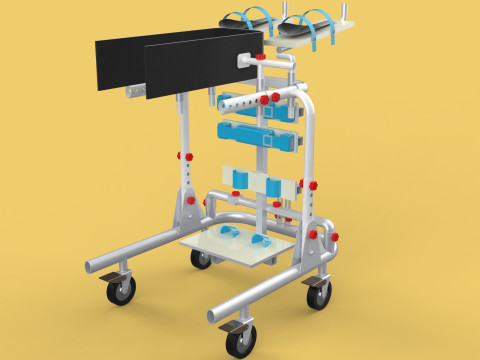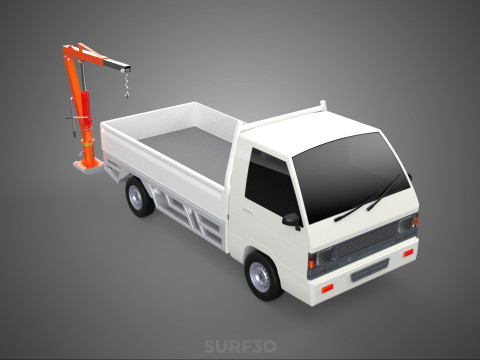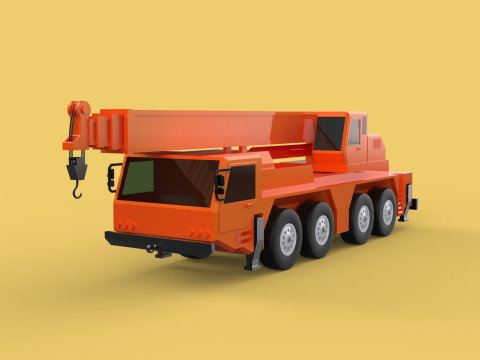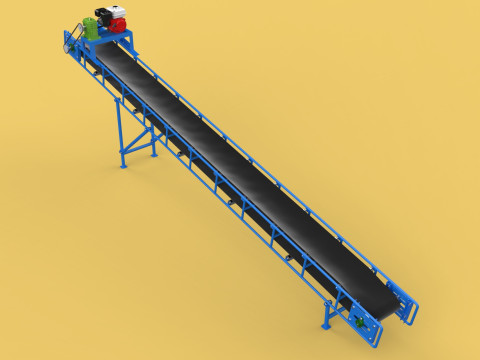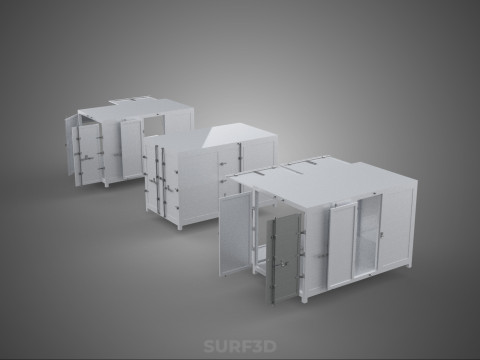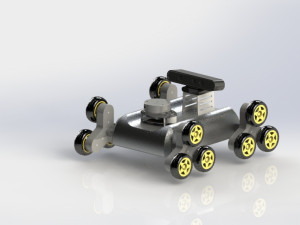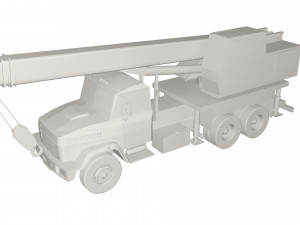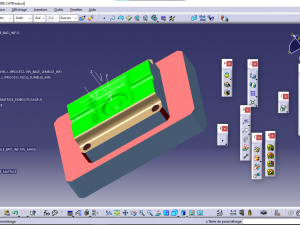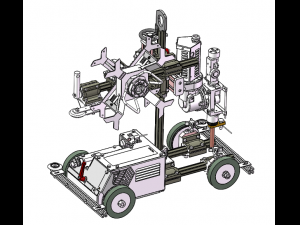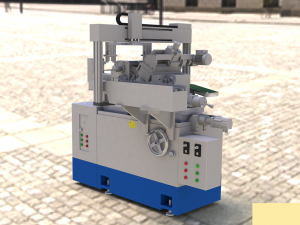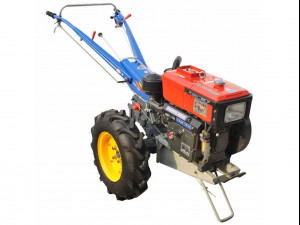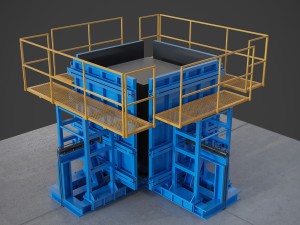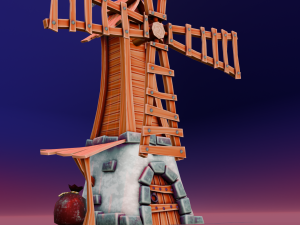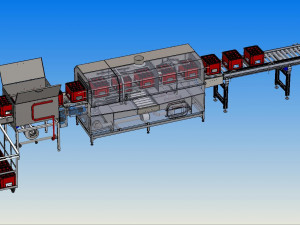物联网智能水培太阳能电池板发电厂水营养 3D 模型
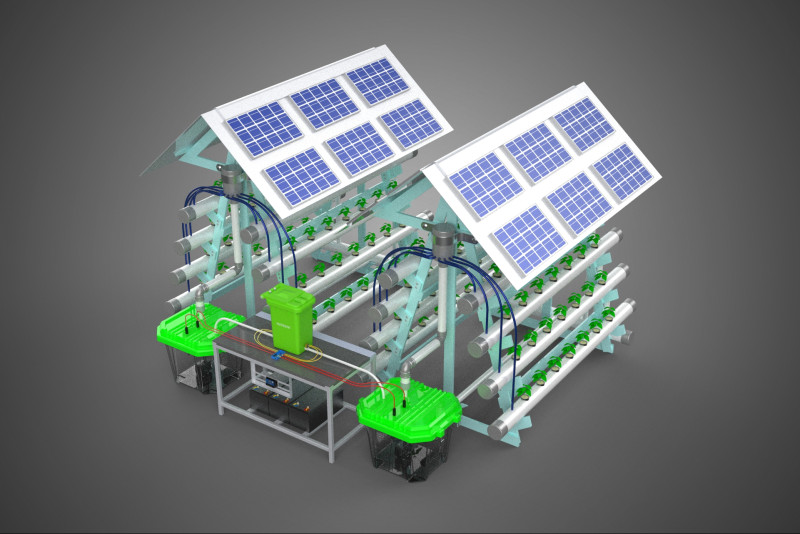
- 可用的格式: GLB (.glb / .gltf) 18.82 MBBlender3D (.blend) 40.79 MBAutodesk FBX (.fbx) 73.33 MB3D Studio (.3ds) 14.63 MBWavefront OBJ (.obj) 36.68 MBIGES (.iges) 12.83 MBAutodesk 3DS MAX (.max) 76.45 MBSketchUp (.skp) 12.95 MBRhinoceros (.3dm) 47.87 MBStereolithography (.stl) 38.42 MBCollada (.dae) 38.06 MBACIS(.sat) 39.40 MBSTEP (.step) 16.08 MBAutodesk AutoCAD (.dwg) 30.96 MB
- 多边形:3105500
- 顶点:2226707
- 动画:No
- 纹理:No
- 操纵:No
- 材料:
- 低聚:No
- 集合:No
- UVW 贴图:No
- 使用插件:No
- 打印准备:No
- 3D扫描:No
- 成人内容:No
- PBR:No
- 人工智能培训:No
- 几何:Poly NURBS
- 包装 UVs:Unknown
- 日期:197
- 日期: 2025-09-06
- 项目 ID:597323
物联网智能水培太阳能电池板发电厂水营养 3D 模型 glb, blend, fbx, 3ds, obj, iges, max, skp, 3dm, stl, dae, sat, step, dwg, 从 surf3d
High-quality 3D assets at affordable prices — trusted by designers, engineers, and creators worldwide. Made with care to be versatile, accessible, and ready for your pipeline.
Included File Formats
This model is provided in 14 widely supported formats, ensuring maximum compatibility:
• - FBX (.fbx) – Standard format for most 3D software and pipelines
• - OBJ + MTL (.obj, .mtl) – Wavefront format, widely used and compatible
• - STL (.stl) – Exported mesh geometry; may be suitable for 3D printing with adjustments
• - STEP (.step, .stp) – CAD format using NURBS surfaces
• - IGES (.iges, .igs) – Common format for CAD/CAM and engineering workflows (NURBS)
• - SAT (.sat) – ACIS solid model format (NURBS)
• - DAE (.dae) – Collada format for 3D applications and animations
• - glTF (.glb) – Modern, lightweight format for web, AR, and real-time engines
• - 3DS (.3ds) – Legacy format with broad software support
• - 3ds Max (.max) – Provided for 3ds Max users
• - Blender (.blend) – Provided for Blender users
• - SketchUp (.skp) – Compatible with all SketchUp versions
• - AutoCAD (.dwg) – Suitable for technical and architectural workflows
• - Rhino (.3dm) – Provided for Rhino users
Model Info
• - All files are checked and tested for integrity and correct content
• - Geometry uses real-world scale; model resolution varies depending on the product (high or low poly)
• • - Scene setup and mesh structure may vary depending on model complexity
• - Rendered using Luxion KeyShot
• - Affordable price with professional detailing
Buy with confidence. Quality and compatibility guaranteed.
If you have any questions about the file formats, feel free to send us a message — we're happy to assist you!
Sincerely,
SURF3D
Trusted source for professional and affordable 3D models.
More Information About 3D Model :
An IoT Smart Hydroponic Solar Panel Power Farm Plant Water Nutrient system represents an advanced, integrated agricultural methodology combining soilless cultivation with renewable energy and intelligent automation. This sophisticated framework leverages the Internet of Things (IoT) for real-time monitoring and precise control over environmental parameters and nutrient delivery in a hydroponic setup, all powered by sustainable solar energy.
**Core Components and Functionality:**
1. **Hydroponic System:** At its core, the system employs hydroponics, a method of growing plants without soil, using mineral nutrient solutions dissolved in water. Various hydroponic techniques, such as Nutrient Film Technique (NFT), Deep Water Culture (DWC), or Drip Systems, may be integrated. Water, enriched with precisely balanced macro and micronutrients, is delivered directly to the plant roots, often in a recirculating manner to maximize water and nutrient efficiency. This soilless environment eliminates soil-borne pests and diseases, reduces land requirements, and allows for year-round cultivation independent of soil quality.
2. **Solar Power Integration:** The entire agricultural operation is powered by a dedicated solar energy system. Photovoltaic (PV) panels convert sunlight directly into electricity, which can be utilized immediately by the farm's components or stored in battery banks for continuous operation during periods of low sunlight or at night. This integration ensures energy independence, significantly reduces operational costs, and minimizes the carbon footprint, aligning the system with principles of sustainable agriculture and often enabling off-grid deployment.
3. **IoT and Smart Control System:** The "Smart" and "IoT" aspects are central to the system's efficiency and automation. A network of interconnected sensors continuously monitors critical environmental and physiological parameters. These typically include:
* **Water Parameters:** pH levels, Electrical Conductivity (EC) (indicating nutrient concentration), water temperature, and dissolved oxygen in the nutrient solution.
* **Atmospheric Parameters:** Air temperature, relative humidity, CO2 levels, and light intensity (Photosynthetically Active Radiation - PAR).
* **Plant-Specific Data:** Potential data on plant growth rates or stress indicators, though this can vary based on system sophistication.
Data collected by these sensors is transmitted via an IoT platform (utilizing technologies like Wi-Fi, LoRa, or cellular networks) to a central processing unit or cloud-based server. Sophisticated algorithms analyze this data in real-time to identify deviations from optimal conditions for specific crop types. Actuators, controlled by the smart system, then initiate corrective actions automatically. Examples include:
* **Nutrient Dosing:** Automated pumps precisely adjust pH and EC by adding specific nutrient solutions or pH-adjusting agents.
* **Environmental Control:** Fans, exhaust systems, heaters, humidifiers, or LED grow lights are activated to maintain ideal air temperature, humidity, and light cycles.
* **Water Management:** Automated pumps circulate nutrient solutions, manage reservoir levels, and initiate replenishment cycles.
This level of automation enables precise resource management, optimizes plant growth conditions, and allows for remote monitoring and control via web or mobile applications, enhancing operational flexibility, scalability, and labor efficiency.
**Advantages:**
This integrated system offers numerous advantages for modern agriculture:
* **Resource Efficiency:** Significant reduction in water consumption (up to 90% less than traditional farming), optimized nutrient usage through recirculation, and efficient land utilization (especially in vertical farming setups).
* **Environmental Sustainability:** Reliance on renewable energy eliminates fossil fuel consumption for power, while the soilless nature reduces pesticide use, prevents soil erosion, and minimizes nutrient runoff into natural water bodies.
* **Increased Productivity:** A controlled environment leads to faster growth cycles, higher yields, and consistent crop quality, independent of external climate conditions.
* **Locality and Food Security:** Enables local food production in urban areas, deserts, or regions with poor soil, thereby enhancing food security, reducing transportation costs and carbon emissions, and ensuring fresher produce.
* **Precision Agriculture:** Data-driven insights allow for fine-tuning of growing "recipes," predictive maintenance, and optimized resource allocation, minimizing waste.
**Applications:**
IoT Smart Hydroponic Solar Panel Power Farms are applicable in diverse scenarios, including urban vertical farms, controlled environment agriculture (CEA), remote community food initiatives, educational and research facilities, and commercial-scale specialized crop production where consistent quality and high yield are paramount. They are particularly valuable in areas with limited arable land, water scarcity, or unreliable electricity grids.
**Challenges:**
Despite its advantages, implementation faces challenges such as high initial capital investment for hardware (solar panels, sensors, controllers, hydroponic infrastructure), the technical expertise required for setup, operation, and maintenance, and potential vulnerabilities related to system failure or cyber security for IoT components. The reliance on technology also necessitates robust backup systems and reliable internet connectivity.
**Future Prospects:**
Future developments are anticipated to include enhanced integration with artificial intelligence and machine learning for predictive analytics, autonomous operation, and real-time disease detection. Modular and scalable designs will facilitate easier deployment in various environments. Advanced sensor technologies for even more granular plant physiological monitoring, coupled with further reductions in component costs, will likely make these sophisticated agricultural systems more accessible and widespread globally.
需要更多的格式吗?
如果你需要一个不同的格式,请打开一个新的支持票和为此请求。我们可以转换到 3D 模型: .stl, .c4d, .obj, .fbx, .ma/.mb, .3ds, .3dm, .dxf/.dwg, .max. .blend, .skp, .glb. 我们不转换 3d 场景 以及 .step, .iges, .stp, .sldprt 等格式。!使用信息
物联网智能水培太阳能电池板发电厂水营养 - 您可以根据基本许可或扩展许可,将此免版税 3D 模型用于个人或商业用途。基本许可涵盖大多数标准用例,包括数字广告、设计和可视化项目、商业社交媒体账户、原生应用、Web 应用、视频游戏以及实体或数字最终产品(免费和出售)。
扩展许可包含基本许可授予的所有权利,没有任何使用限制,并允许在免版税条款下将 3D 模型用于无限的商业项目。
阅读更多


 English
English Español
Español Deutsch
Deutsch 日本語
日本語 Polska
Polska Français
Français 中國
中國 한국의
한국의 Українська
Українська Italiano
Italiano Nederlands
Nederlands Türkçe
Türkçe Português
Português Bahasa Indonesia
Bahasa Indonesia Русский
Русский हिंदी
हिंदी